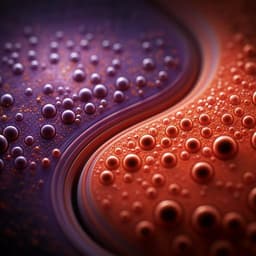
Medicine and Health
Microfluidic vortex focusing for high throughput synthesis of size-tunable liposomes
J. Y. Han, J. N. L. Fiandra, et al.
Discover a groundbreaking microfluidic vortex focusing technique that allows for the synthesis of liposomes with unparalleled size control and high production rates! This research, conducted by Jung Yeon Han, Joseph N. La Fiandra, and Don L. DeVoe, reveals how producing liposomes as small as 27 nm at rates exceeding 20 g/h could revolutionize nanomedicine.
Playback language: English
Related Publications
Explore these studies to deepen your understanding of the subject.







